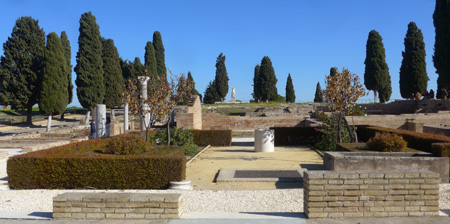
A short ride from Sevilla, getting off the bus in Santiponce may feel like you’ve stepped into small-town Spain. But you’re about to enter the hometown of two emperors & what was once a thriving city of 10,000 people… at one of the far reaches of the Roman Empire.
Pre-history
Then as now, location had a lot to do with development. Indigenous communities thrived in the southern peninsula’s ideal climate & had easy access to the Atlantic Ocean. Looking at a map today, you might not realize that Sevilla (first known as Spar, later as Hispalis) sat near the edge of a large gulf 3,000 years ago. The gulf takes its name from the most important settlement in the region: Tartessus. Although the exact location of their capital city has yet to be discovered, many treasures (including lots of gold) have been unearthed. As of the 8th century BC, the people of Tartessus traded with Phoenicians who had established a lucrative trading post nearby on the island of Gadir… known today as Cádiz.
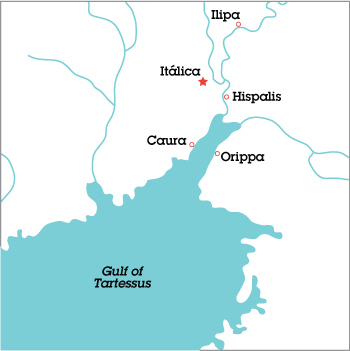
Side note: The gulf above would silt up slowly over time & is now one of Europe’s most prized wildlife refuges: Doñana national park.
Punic Wars
Pushed from their homelands in Tyre, Phoenicians founded the city of Carthage in modern-day Tunisia, taking control of parts of Sicily, Sardinia & a large portion of what is now Spain’s popular Mediterranean coast. But Roman expansion soon brought them into conflict with the Carthaginians, who weren’t keen on surrendering important trade routes. The overwhelming defeat of Carthage in the first Punic War (264—241 BC) established a frontier in the Iberian peninsula when Rome promised not to cross the Ebro River. Right. Neither side seemed pleased with the status quo, & the second Punic War began in 218 BC with Hannibal & his famous elephants.
During this second war, Roman general Scipio Africanus brought 48,000 troops to fight in the Iberian peninsula. In 206 BC, he attacked the 74,000 men camped at Ilipa (see above map) commanded by Hannibal’s brother, Mago Barca, & general Hasdrubal Gisco. Surprise tactics & an early start gave Scipio his most celebrated victory. War continued for another five years, but eventually Hannibal suffered defeat near the city of Carthage by Scipio himself.
After the Battle of Ilipa, Scipio established a settlement for wounded & retired soldiers near the Guadalquivir River. Itálica, named for its troops’ origins, became the first Roman city founded in Iberia.
Beginnings
Unfortunately, not much is known about the early days of Itálica because the first city lies directly beneath the modern town of Santiponce. Many artifacts wait patiently underground to be discovered sometime in the future. But Roman records tell of quick growth, support of Julius Caesar during the civil war with Pompey, & ascension of Itálica to the level of municipium… which meant self-governance. Although Itálica minted its own coins, the city remained relatively small in size.
Emperors
Augustus (r. 27 BC—14 AD) sent his retired legionaires to Itálica, maintaining the city’s important role for the military. Several roads connected Itálica to regional capitals & brought goods as well as news from the rest of the empire. Itálica witnessed the birth of Trajan in the year 53. With his father in the Senate, Trajan chose a military career & came to govern Germania Superior. Named emperor at the age of 45, Trajan (r. 98—117) became the first non-Italian leader of Rome & extended the territory of the empire more than any other ruler (map below). Itálica would also benefit from its native son, as important public works made the city a better place to live.
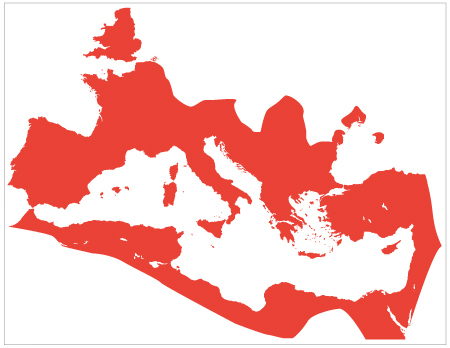
Trajan’s successor, Hadrian (r. 117—138), did much more than build a wall in England. As another native son from Itálica —at least that’s the official story, although his actual birthplace is up for debate— he added 40 hectares to the city (for a grand total of 52), built a new defensive perimeter, installed larger baths, improved plumbing & sewage & even upgraded the status of Itálica to colonia. The shaded area of the map below corresponds to the original extent of Itálica; Hadrian’s expansion more than doubled its size. A dashed, red line denotes the current limits of modern-day Santiponce:
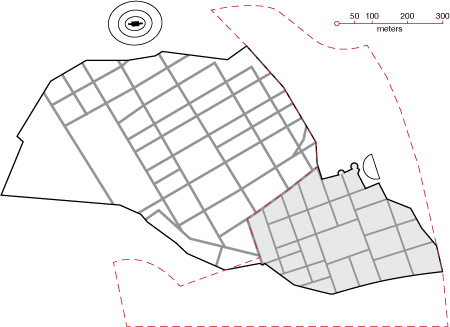
Post-Rome
As Rome’s fortunes faded, so did those of Itálica. Sevilla had long been an administrative center for the Romans & began to take precedence while Itálica remained a relatively quiet retirement city. Visigoths & Moors found little of interest there, & the population gradually left to other urban areas. When Fernando III conquered Sevilla in 1248, nothing of Itálica remained but a memory. Nearby residents lived on the banks of the Guadalquivir, but as the river’s course changed they were forced to move to higher ground… to a hilltop that was once named Itálica. The new town of Santiponce still sits above the original settlement of Itálica.
Rediscovery
Many Roman cities around Europe suffered the same fate as Itálica… abandoned structures make an easy-access quarry for newer buildings. In the 1700s, the Spanish government even encouraged using materials from Itálica to construct a highway connecting Sevilla to Extremadura. Fortunately the 1800s brought a new appreciation of the historical treasure buried underground, demolition stopped & the first scientific excavations took place. The wealthy fought over the finest pieces, installing them in their own homes (like mosaics in the Palacio de la Condesa de Lebrija in Sevilla below) or taking them to foreign museums like Archer Huntington for The Hispanic Society of America in New York City. Fortunately for Sevilla, a good part its local history is still available to be seen in the city…
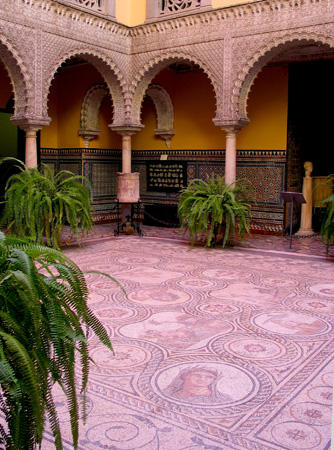
What to see
The town of Santiponce has excavated the original bath complex as well as the theater, & both can be visited. But the modern-day site of Itálica corresponds more or less to the expansion of the city under Hadrian’s rule. The Exedra had a little of everything as a public space: a small bath complex, an area for banquets, plus a large, open palestra used for exercise. Like any archaeological site, a little imagination goes a long way. Some of the empire’s most revered soldiers retired here & used this space like a modern-day gym:
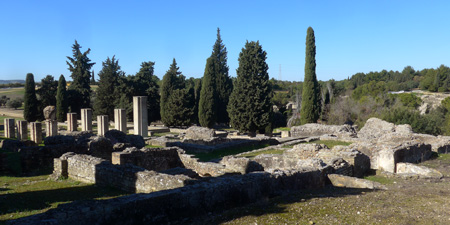
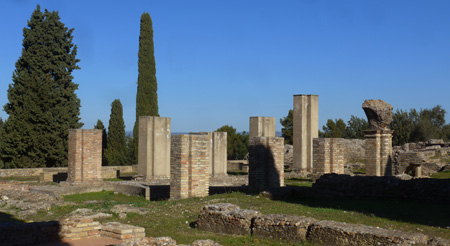
Most people love Roman mosaics & Itálica doesn’t disappoint. As mentioned, several have been moved elsewhere but many are still in situ. I love the Neptune mosaic mainly for the pygmies that fill its border… chased by alligators up trees or even eaten by them! The Planetario mosaic (found in the 1970s) is currently under restoration but still available to get a glimpse of seven gods ruling the seven days of the week. I’ve never seen so many birds in a single mosaic at the Casa de los Pájaros! And of course geometric patterns abound:
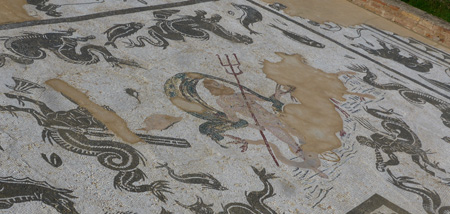
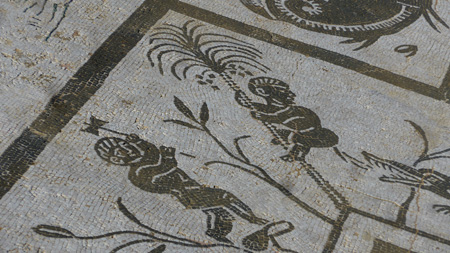
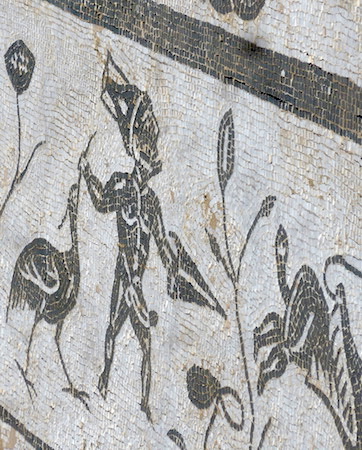

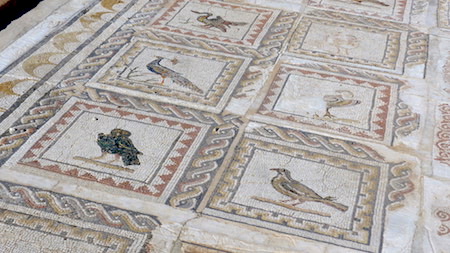
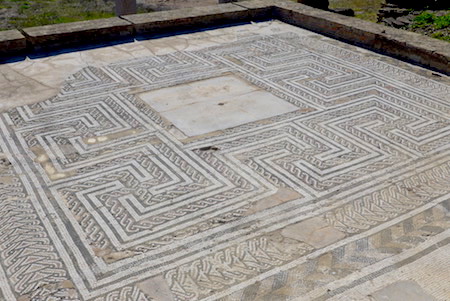
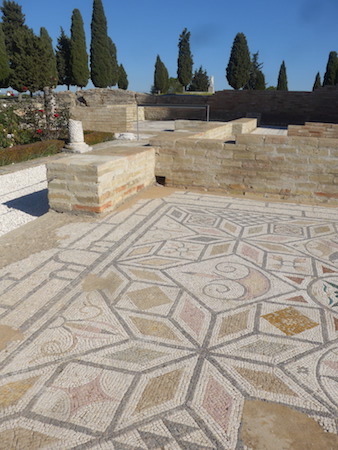
But the first & probably grandest thing you’ll see on entry is the amphitheater… third largest in the entire Roman empire & built by either Trajan or Hadrian to hold 25,000 spectators. Many stones were saved from re-use, fallen areas were rebuilt & just wandering this mega-construction so far from Rome is fascinating. Pretend to be a gladiator or a spectator:
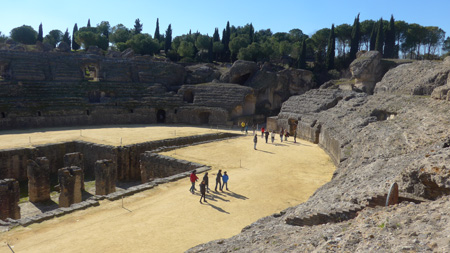
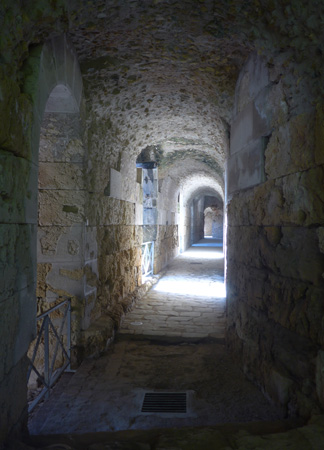
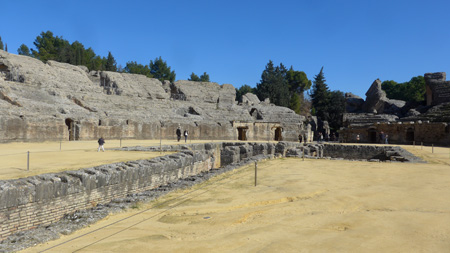
One thing to keep in mind is that many items look original but are in fact replicas. That statue of Trajan looks great on site; however, for the real deal you’ll have to return to Sevilla. A row of restaurants cater to hungry tourists just outside the main entrance of Itálica. Rest, refuel, then catch the bus back to the big city. That’s our next stop…
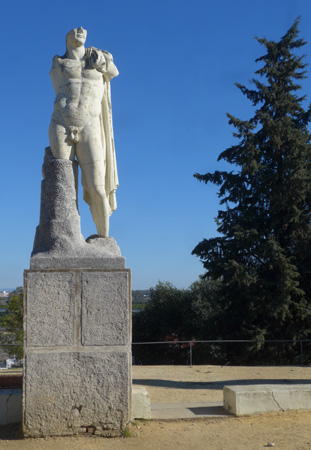
Museo Arqueológico
Completed in 1919 as preparations began for the upcoming 1929 Ibero-American Exposition, this grand building was used as the expo’s Fine Arts pavilion. Meanwhile, Sevilla’s archaeological stockpile grew as artifacts from various excavations merged into one very large collection. Too cumbersome to display adequately, the entire lot found a new home in the former Expo pavilion in 1946. Pre-Roman & Moorish pieces are impressive, but the bulk of the Museo Arqueológico is dedicated to what has been discovered at Itálica since the late 1700s.
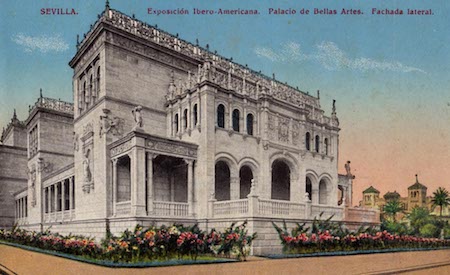
While the expansive site of Itálica shows off the former city’s scale, the archaeological museum displays its grandeur; both should be seen together. Favorite pieces are statues of Mercury, Diana, & Venus, the hand of Jupiter holding a lightning bolt, an impressive forearm of a colossal statue, & of course one of the very best busts of Hadrian found in Iberia. Don’t miss a pair of rare & almost intact miliario or mile markers. Placed on Roman roads to mark distance, most usually crumbled due to exposure to the elements or were snatched to support post-Roman houses:
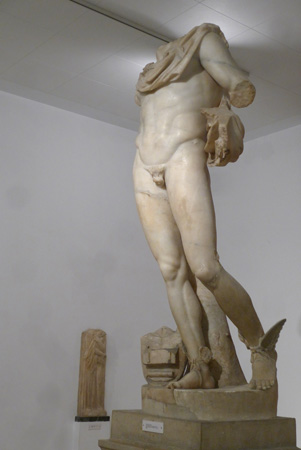
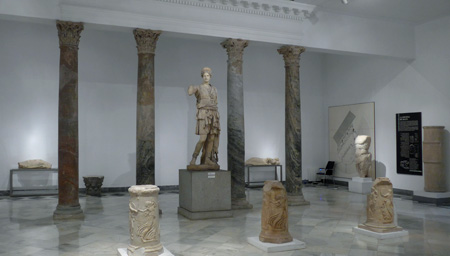
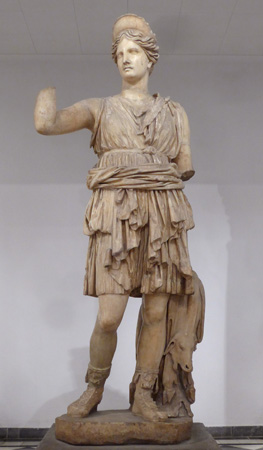
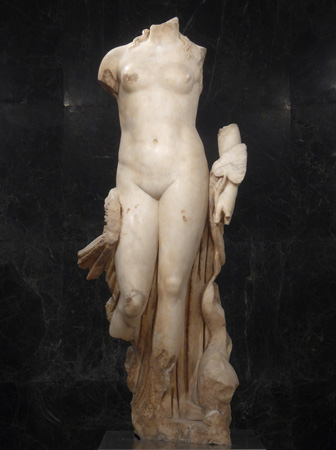
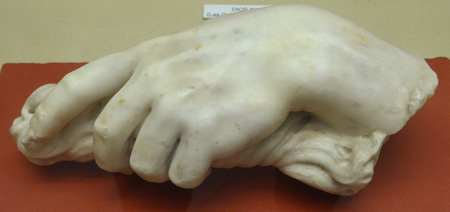
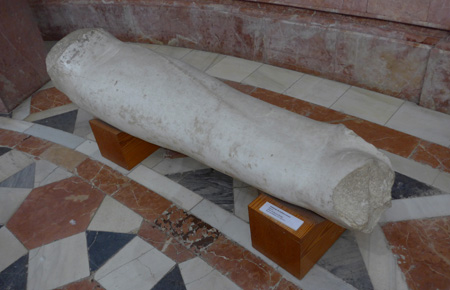
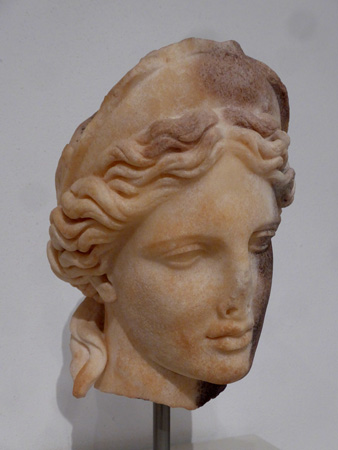
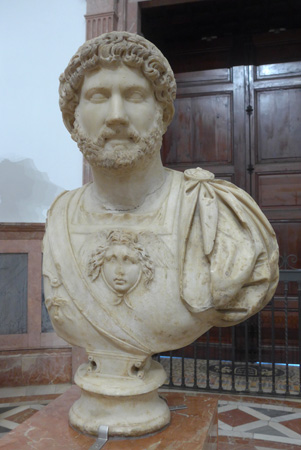
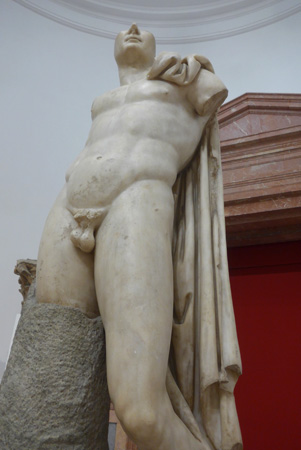
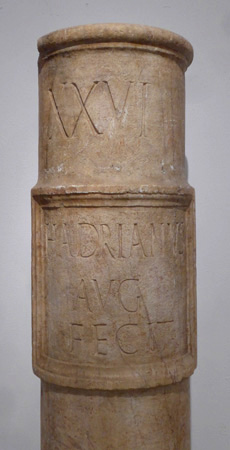
Most people come to Sevilla for flamenco, Holy Week & a great tapas scene. That’s all here, but so is a look into its unique history. Don’t miss this essential part of Sevilla’s past!
Update (14 Jan 2020): The Archaeology Museum is closed for renovation until 2023-ish. Some selected pieces will be on display at the Convento de Santa Inés as of 2022.
Those Romans certainly got around 😉 Keep bumping into them all around Europe.
They certainly did! I never realized just how important Itálica was until I moved to Sevilla… even though my first visit was back in 2000 😉 Jerash in Jordan is the most impressive I’ve seen though. Definitely go!